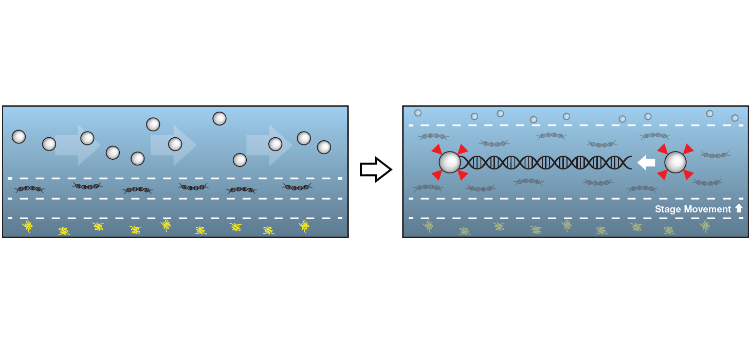In a study performed at the Technion – Israel Institute of Technology, researchers used our u-Flux™ laminar flow microfluidics system combined with optical tweezers to investigate the activity of the Escherichia coli enzyme RecBCD and its subunits.
The paper titled “Synergy between RecBCD subunit is essential for efficient DNA unwinding” appeared in the journal eLife – congratulations to all the authors!
RecBCD is an essential heterotrimer involved in homologous recombination of E. coli DNA damage. Before repair, the complex binds and unwinds the DNA at the damage site, displacing DNA-bound proteins in the process.
Although previous studies have described the role of RecBCD-initiated homologous recombination, the activities and forces associated with the process by individual subunits (RecB and RecD) are unclear.
The researchers used optical tweezers to trap and manipulate a DNA structure between two beads. An exposed blunt stem on the DNA – mimicking a double-strand break end – served as a docking point for the RecBCD, allowing it to bind and process the molecule. Importantly, by altering the processing distances, ATP concentrations, and applied trap-forces, they could measure the individual activities associated with the helicase subunits (RecB or RecD).
With the u-Flux microfluidics system the team could easily create the experimental assay in situ and transfer the trapped DNA into separate channels containing RecBCD or ATP before force-manipulation with the optical tweezers.
The team found that RecBCD can generate forces up to 40 pN (25-40 pN) and that the RecD subunit is a fast single-stranded DNA translocase although a weak and poorly processive helicase. According to the findings, RecD unwinds the DNA as a so-called Brownian ratchet, and can only do so efficiently once associated with the rest of the complex.
Altogether the findings give further insight into the mechanism behind the protein eviction or displacement related to RecBCD-induced DNA unwinding.
The u-Flux™ laminar flow microfluidics system used in this study is commercially available by LUMICKS. Are you interested in using the instrument in your research? Please feel free to contact us for a demo or quote.



